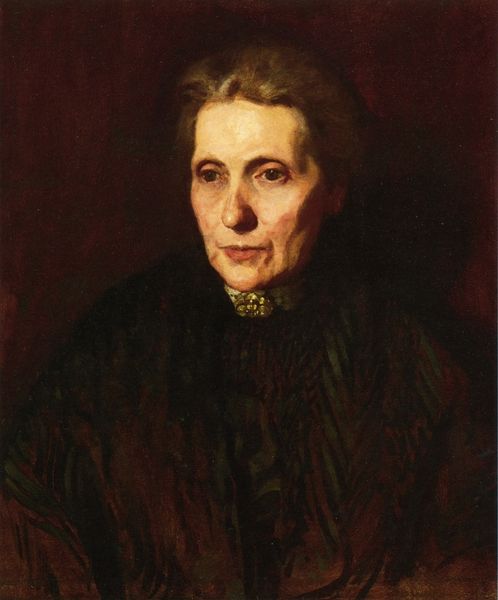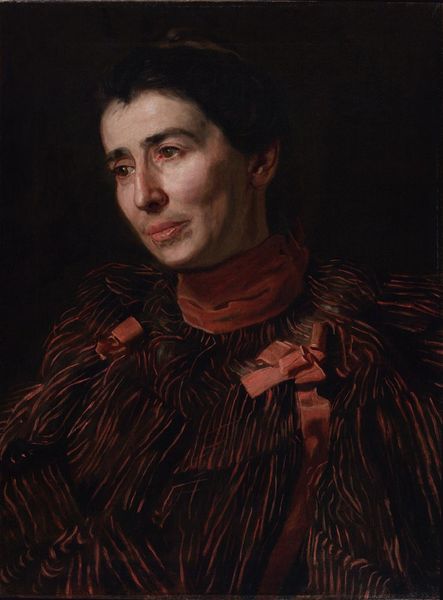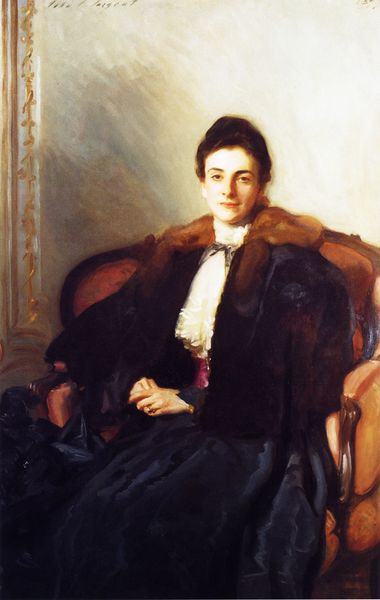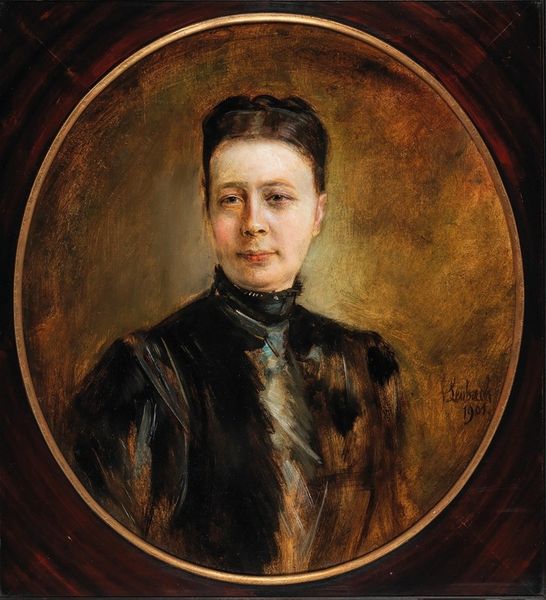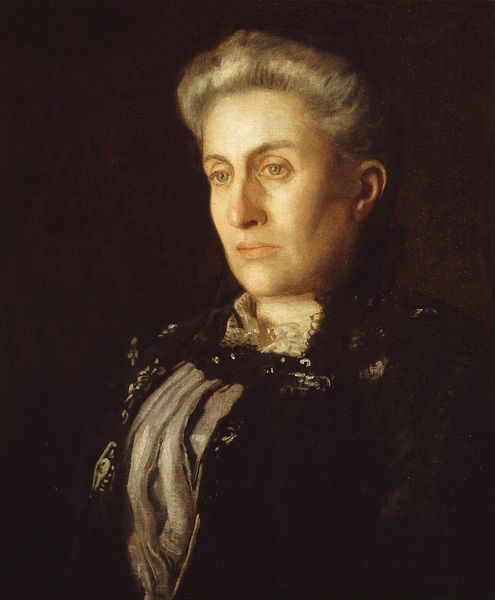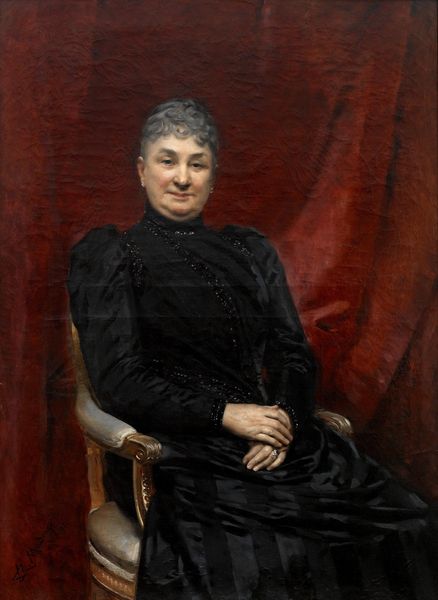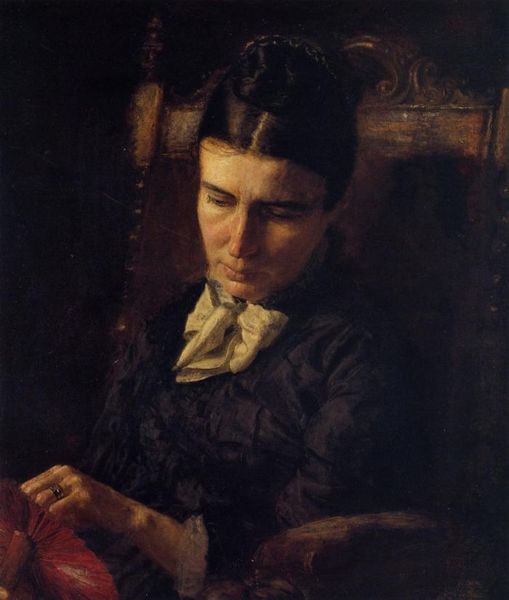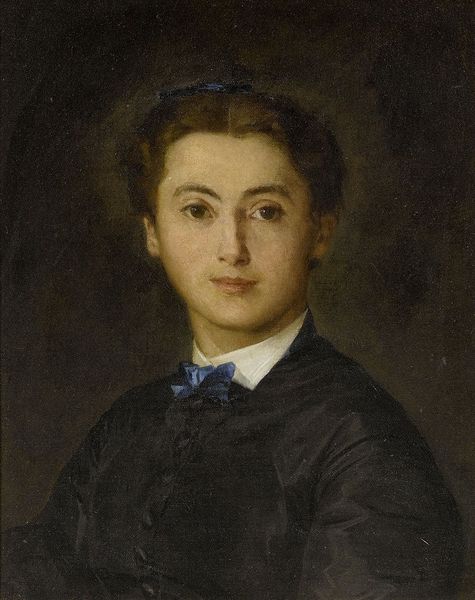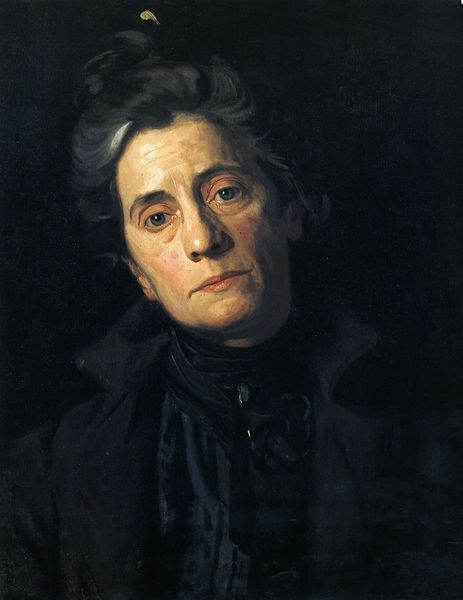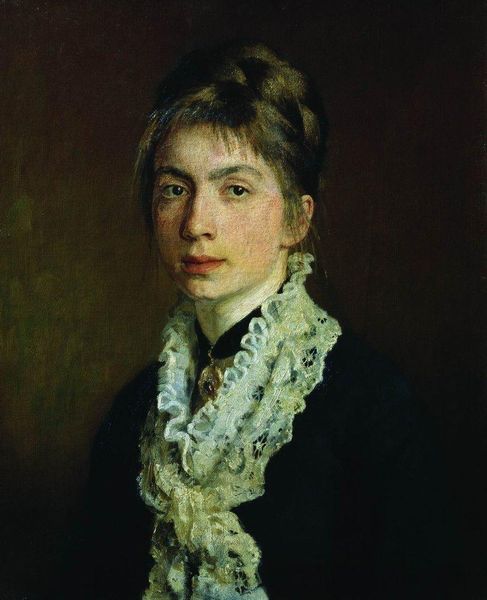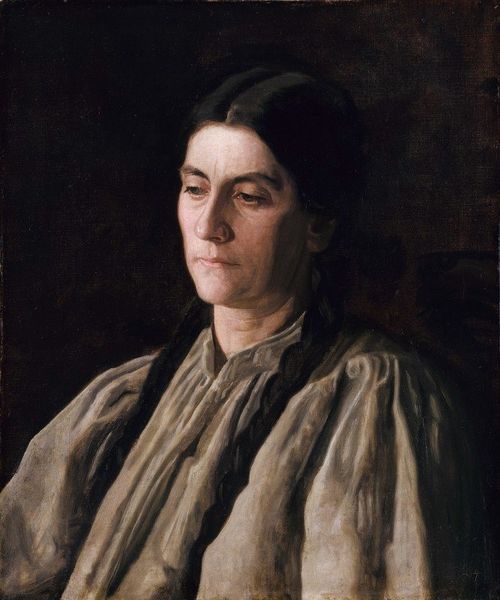
Copyright: Public Domain: Artvee
Editor: Here we have Thomas Eakins's "Portrait of Mary Adeline Williams," painted in 1899, using oil on canvas. It feels like a very direct and honest portrayal. What strikes you most about this work? Curator: Well, beyond the masterful realism, I see layers of cultural meaning embedded in the imagery. Consider the severe dark clothing contrasting with the pristine white collar. It’s not simply about fashion, but the visual encoding of social identity – restraint, intellect, perhaps even a quiet defiance of the decorative. Notice the gaze; direct, unwavering. Editor: It’s quite piercing, isn't it? There is almost an unsentimental quality to the image, and also the restraint of the palette. Curator: Exactly. What stories might this portrait silently carry about the role of women, education, and the values held at the turn of the century? This work embodies not just an individual but the symbolic representation of a certain social class. Are we perhaps looking at the dawn of a new type of female presence within society? Editor: That makes me see it in a whole new way! The white collar suddenly reads like a symbol of intellectual pursuit. It gives new insight into Eakins’ motivations, too. Curator: These aren’t just brushstrokes but clues left by the artist about cultural memory and personal narrative. Even the way light falls conveys so much about the character. Editor: I appreciate understanding the symbols. It enriches the painting, inviting conversations beyond surface appearances. Curator: Indeed. And that's the power of art; it’s a reflection, both of ourselves and of our shared history, captured through symbolic languages.
Comments
No comments
Be the first to comment and join the conversation on the ultimate creative platform.
